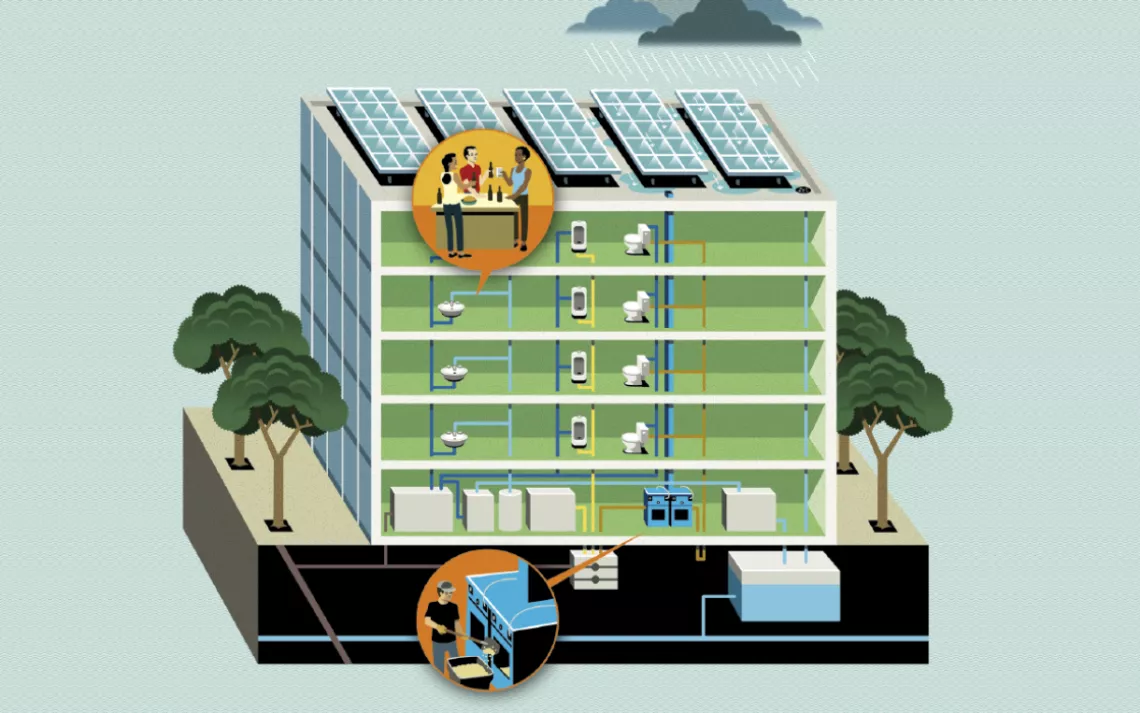The Gritty Truth About Multistory Composting Toilets
Can composting toilets work at scale?

The Claim
Over a third of the water used indoors in US households goes to flushing toilets. Toilets aren't the biggest drain on our water supply (thermoelectric power and agriculture are), but adapting a very old technology—the composting toilet—to modern construction could save water for more important uses.
Composting-toilet technology is very simple: Person poops into pile; pile (appropriately tended to) turns into compost. The process is millennia old on a small scale but seldom used in, say, a modern office building. If all goes according to plan, the five-story PAE Living Building will open this fall in Portland, Oregon, with composting toilets that will drastically lower water and sewer use and deliver $25,000 a year via a homemade-fertilizer sideline.
How It's Supposed to Work
The toilets in the PAE building empty into composting units—basically giant ventilated tanks with a built-in rake to keep things stirred and aerated.
PAE hopes that the compost can be used as fertilizer, but it's not yet clear where that might be allowed. Urine is another story. Unlike solid waste, which you pretty much need to pay someone to take away, urea is relatively free of pathogens and has a high nitrogen content, both of which make it valuable fertilizer. Potential clients include local cannabis farms.
What Could Go Wrong?
The first multistory building in the country to install composting toilets, Seattle's Bullitt Center, replaced them after years of struggles with excessively wet compost caused by (among other things) inadequate pee diversion. A study of toilets in the backcountry concluded that the "composting" part was often wishful thinking, since the ammonia in urine inhibits the decomposition process.
PAE, which also designed the Bullitt Center system, plans to reduce the risk by routing the urinals to a separate pee tank and by connecting popular toilets to several composting units via a vacuum-flush system so no single unit will be overwhelmed.
The Upshot
Right now, it's cheaper and easier to install and maintain a fleet of regular toilets than a composting system. The challenge is partly one of personnel. It's not easy to find a facilities manager whose heart gladdens at troubleshooting a 200-gallon poop tank.
But given that climate change is already throwing water supplies and public infrastructure out of whack, the PAE building is one example of what adaptation could look like. In an increasingly thirsty world, we can't afford to just flush and forget.
This article appeared in the Fall quarterly edition with the headline "Poop Loop."
 The Magazine of The Sierra Club
The Magazine of The Sierra Club



